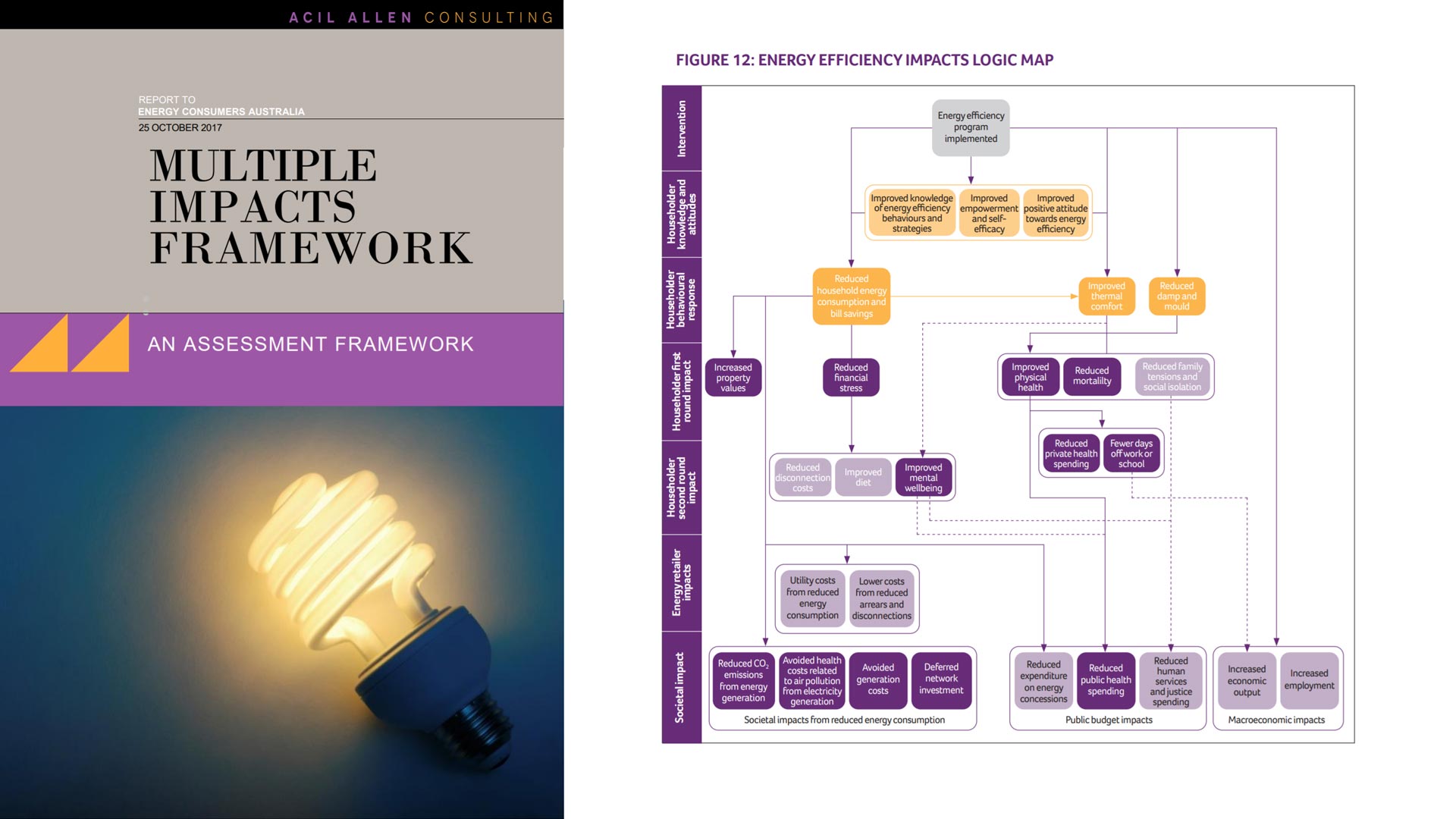Capturing the wider benefits
There are benefits to consumers when they use energy more efficiently – both how much they use and when they use it – in the form of lower bills, as well as wider system benefits.
These benefits will only increase as technology unlocks the potential for consumers to be more flexible in their energy use, and as changes are made to the built environment in the form of lower energy operating costs of housing and major appliances.
In Australia, Power Shift’s research indicates that helping people manage their energy has impact far beyond reduced greenhouse gas emissions or cost savings to households.
Helping policymakers build a better business case
Energy Consumers Australia commissioned ACIL Allen to develop a framework to quantify and define the full range of benefits for Australia – a large continent marked by extreme differences in temperatures, population concentration and household wealth.
The Multiple Impacts Framework assists government and industry to place a value on all the impacts of efficient energy use, so that any future cost-benefit analysis of energy efficiency programs more accurately reflects the true benefits to consumers, society and the economy.
It points to the considerable body of evidence indicating that the non-energy benefits (such as increased home comfort and better health) could be of greater value than the energy savings.
The Multiple Impacts Framework describes each impact, encouraging the development of a common lexicon. It gives us a better understanding of the materiality of the impact, and where there is an existing validated survey instrument for capturing it. The Multiple Impacts Framework also provides links to where there is an evidence base, or where further research would be useful.
Report — Multiple Impacts Framework
In December 2017, Energy Consumers Australia convened a webinar on the Multiple Impacts Framework – that can be seen here below.

